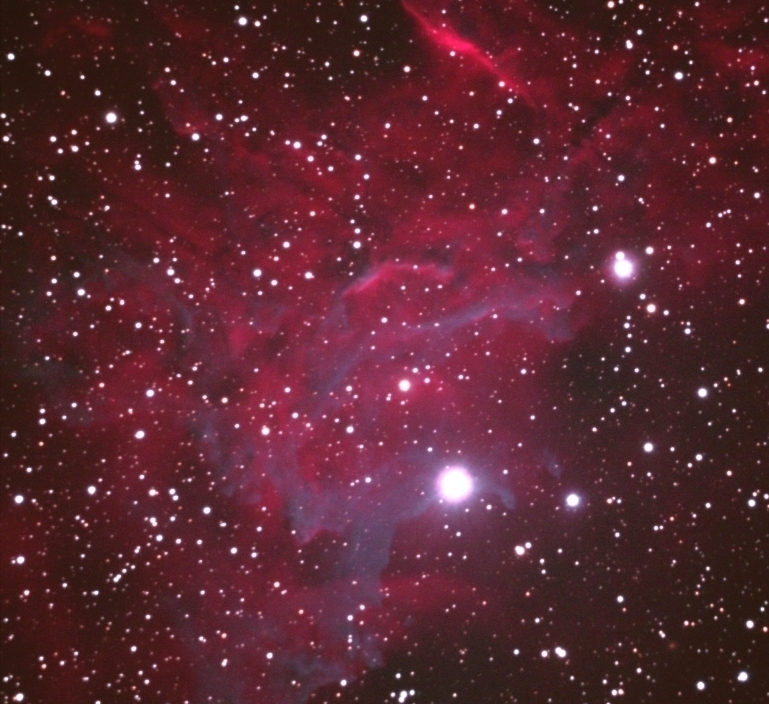
|
|
| C31, Flaming Star (NGC 2359 or IC402), Image cropped and downsized for display here |
|
The big bright star lower right of center, is lighting up and heating up a cloud of reddish hydrogen gas that lies mostly behind it, and is lighting up some bluish dust that lies mostly between it and us. This view is about 3 light years wide. The remarkable thing about this star, is where it came from. Most stars associated with nebulae are born from the enveloping gas of the nebula. Not so here. This star, named AEAuriga, comes from way down by the trapezium of the Orion Nebula 1700 light years away. It was slung out of there 2.5 million years ago by a close encounters with a pair of massive binary stars. Now it is speeding past this area at about 125 miles per second, lighting up and heating the area's gas and debris as it goes by. This star is moving fast, but to give you a sense of how big this view is, it'll take about 3000 years for it to move to the upper edge of the picture. From big to small, this star is among the larger ones. It is classified as a blue type "O" star, about 17 times heavier and 30,000 times brighter than our sun. However, being 1500 light years away, and with a lot of Milky Way dust between it and us, it is barely visible with the unaided eye even at a dark site, about as bright as the planet Uranus. It's big and bright in this image because of the long time exposure needed to show the background nebula. The Flaming Star name comes from Max Wolf when in 1892 he described it as "..a burning body from which several enormous curved flames seem to break out like gigantic prominences". |
|
10" F6.3
Schmidt Cassegrain telescope. TeleVue coma corrector changing the effective
f ratio to 7.5, Hutech P2 light polution filter. Astro Modified Canon T2i camera at Prime focus |